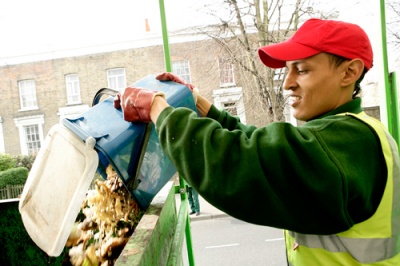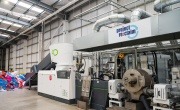'Vital' food waste recycling plan gives industry plan of attack
 A Food Waste Recycling Action Plan developed by a range of stakeholders in the food waste recycling industry, led by the Waste and Resources Action Programme (WRAP), has established a series of actions needed to increase the quantity and quality of food waste recycled in the UK.
A Food Waste Recycling Action Plan developed by a range of stakeholders in the food waste recycling industry, led by the Waste and Resources Action Programme (WRAP), has established a series of actions needed to increase the quantity and quality of food waste recycled in the UK.
The five-point plan has been designed to increase the amount of food collected from both households and the commercial sector, provide long-term, high quality feedstocks for food waste processing plants and share the costs and benefits across the food waste supply chain.
It sets out a roadmap for the food waste recycling industry to meet its full potential and establishes a supportive landscape for local authorities to improve or introduce new food waste collections. In particular, it emphasises the need for greater collaboration across the food waste recycling supply chain.
The plan has been developed by industry members including local authorities, waste treatment operators, private sector waste collectors and industry bodies and was launched this morning (7 July) at UK AD & Biogas 2016, the annual trade show hosted by steering group members the Anaerobic Digestion & Bioresources Association (ADBA). It was initiated by, and has been led by, resource efficiency experts WRAP and chaired by waste and resources specialist, Ray Georgeson.
Georgeson wrote in the plan’s foreword: “Preventing food waste in the first place should remain the priority, but a huge amount of food waste is still unavoidable – four million tonnes a year from households alone. Recycling this unavoidable food waste, either by anaerobic digestion or by composting, represents the most sustainable way of extracting value and turning this waste into a resource.”
Five-point plan to increase recycling
 Despite the UK’s best efforts, there is still 10 million tonnes of food wasted across the UK after it leaves the farm every year, 40 per cent of which is unavoidable, according to WRAP research. However, just 1.8 million tonnes is recycled.
Despite the UK’s best efforts, there is still 10 million tonnes of food wasted across the UK after it leaves the farm every year, 40 per cent of which is unavoidable, according to WRAP research. However, just 1.8 million tonnes is recycled.
The plan suggests that increasing the volume recycled is ‘vital’ for the food waste recycling industry, and could bring significant economic and environmental benefits. Maximising available anaerobic digestion and composting capacity, for example, would produce valuable energy and renewable fertilisers, as well as reducing the 20 million tonnes of carbon produced annually by food waste. Recycling more food waste could also boost England’s plateauing recycling rate.
The actions are grouped under five distinct themes:
- Developing the business case;
- Optimising food waste collections;
- Communicating with householders and commercial food waste producers;
- Ensuring quality as well as quantity; and
- Making contracts work. Each action is assigned to a lead body responsible for coordinating its delivery.
These are supported by 16 specific actions, each of which has been assigned a specific body that will be responsible for coordinating its delivery as well as several to support the effort. These actions all have a set timescale and performance indicators to assess delivery.
The steering group will review progress reports every six months, with findings of the reviews being published annually to enable stakeholders to assess the effectiveness of the action plan.
Lack of collection consistency
The plan also outlines the barriers to food waste collection and recycling in England, which must be address to harness the full potential of food waste recycling.
Among them is the lack of consistency across the country in household collections, with less than half of all households receiving a service. The different methodologies, perceived cost to local authorities and existing contractual arrangements that restrict the ability to collect food waste separately are other factors holding back food waste recycling at a local government level.
Regarding the food waste processors, the plan states that a lack of feedstock has resulted in unsustainably low gate fees that are not in the long-term interest of collectors or processors, while end markets for digestate demand consistent, high quality products from food waste recyclers.
‘Succinct and realistic’ plan to collectively respond to barriers
Commenting ahead of the plan’s launch, Georgeson said: “Finding a clear and concise path to improved food waste collections was never going to be easy, but I am delighted by the response of the steering group. They have risen to the challenge and we’ve produced a succinct and realistic action plan, which is the industry’s collective response to the barriers holding back growth in food waste recycling. I look forward to seeing us use these actions to deliver tangible change.”
New WRAP CEO Marcus Gover added: “Preventing food waste sits at the heart of what WRAP does, but after we’ve done all we can to prevent and redistribute it, the focus has to shift to recycling. There are significant volumes of food waste still ending up in the residual waste stream. This is a massive loss of resources.
“The action plan recognises the shared interests and common benefits to collecting and recycling more of the food waste we can’t prevent and avoid. This can only be realised by the sector working together. The plan provides the road map for industry to do just that and I urge everyone to take a look at it and see what they can do.”
The Food Waste Recycling Action Plan can be downloaded in full from the WRAP website.





